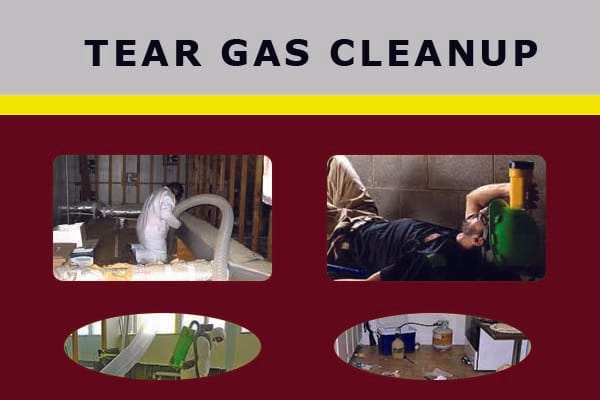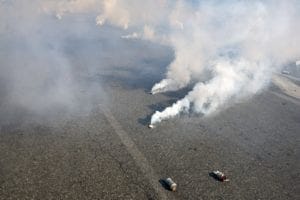Here’s how long tear gas effects can last
Tear gas can refer to one of many types of chemical compounds. There are four main types of tear gas, Chlorobenzylidine malononitrile (CS), Chloroacetophenone (CN), Dibenzoxazepine (CR), and Oleoresin Capsicum (OC). The most common used by law enforcement for crowd control is CS. CN is sold as the person protectant , mace. OC is commonly referred to as pepper spray. Used as a riot control agent, tear gas is meant to disable a persons eyesight, respiratory system, and irritate the skin. Causing sneezing, coughing, and mucus membrane irritation, it renders and attacker harmless.
Tear gas is a chemical compound that is a solid at room temperature. It is typically ground to a fine dust then used in combination with aerosol to create a grenade. When detonated, these grenades create chemical cloud which then affects the area it is discharged in. When blasted, the cloud affects a persons eyes, nose, and respiratory system. Once airborne, it becomes airborne and seeps into all nearby materials: couches, carpet, drywall, vents, air filters, floors, clothing , nothing is safe from the residual effects of tear gas.
After initial exposure to tear gas
The effects of tear gas can last months after initial exposure. When tear gas is used on an assailant in a home or building, it is used in an excessive amount in order to assure his destabilization. When used tear gas is shot into the home, typically in the form of a grenade shaped like a small torpedo which houses the chemical weapon, when it makes impacts with a surface in the building it detonates into a gas cloud. The torpedo can penetrate the drywall, or other surfaces in the home. If this happens, then the drywall and the insulation behind it are now infected. If untreated, the tear gas in the walls will be in the building long after the initial exposure settles. This can cause long-term health dangers to residents of the space.
If a person comes in contact with tear gas, during the initial use or even after it has settled, it can still cause harm to the person. The effects of tear gas can last as short at 30 minutes or upwards of a few hours depending on the amount of initial exposure and time spent in the chemical cloud. Tear gass purpose is to disable a person and it does just that. A person exposed will experience a hard time breathing, itching eyes, impaired vision, runny nose, drooling and even rashes or burns on the skin. If untreated exposure can lead to further health issues and in rare cases prolonged exposure has caused death.
Exposure to tear gas can lead to health risks
Exposure can have health ramification if not attended to quickly. After being exposed, flush eyes out with cool, clean water or saline. Letting the water or saline run over open eyes will remove the tear gas , do not rub eyes as this will just increase irritation. Washing arms, legs, and hair with a body safe detergent in cold water, rinsing and repeating should be enough to remove all residue left on ones body , do not scrub, this can reactive the tear gas. If after multiple attempts itching or rashes persist seek immediate medical attention , the residual effects will not go away on their own. Make sure to heavily wash clothing as the tear gas will penetrate that as well. Multiple washes are best to ensure they are safe to wear again.
Pepper spray, like tear gas, causes irritation of the eyes, skin, and mouth as well as can cause internal harm if inhaled. If one comes in contact with pepper spray, it is imperative that different actions are taken for self-remediation. Water can increase irritation if used on pepper spray, for this reason using oil, milk or alcohol is best when rinsing pepper spray from the body. Again, use a saline or water solution to flush eyes. The pain will increase during decontamination but the residual effects are minimal. If severe respiratory issues occur seek medical attention immediately.
Residual effects of tear gas in a room or property
Though painful, the effects of tear gas during and after exposure are non-life threatening 99% of the time and recovery is quick. The best practice is to stay calm, follow the tips above and begin cleaning yourself and the affected area as soon as possible. If not cleaned and remediated properly, tear gas can have long lasting ramifications. The residual effects can cause the same amount of harm and damage to the home or person it did when the grenade was first detonated. Always treat exposure immediately and seek professional aid if irritation does not subside. Prolonged exposure can lead to lung problems, respiratory issues, heart damage, and in extreme cases death.
Contacting a professional for Tear Gas Removal is the quickest and safest way combat the long-lasting effects of tear gas.



